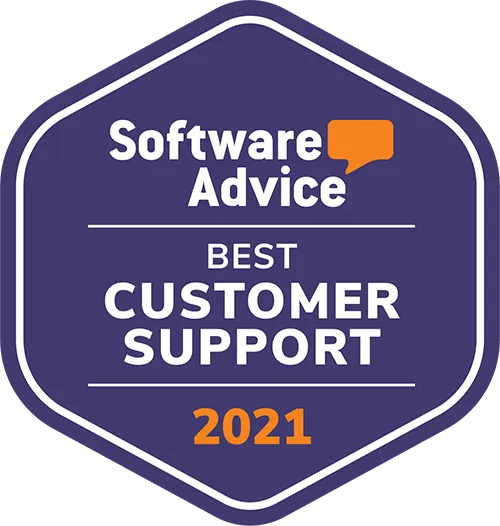It wasn’t a hard choice to select SmartSurvey. Not only did they understand what we were looking to achieve right from the start, they presented a solution that represented everything we needed.
Measuring Employee Engagement
Measuring Employee Engagement

How to measure employee engagement the right way
If you’ve got this far, you’re likely already on the path to implementing an employee engagement strategy.
Sure, you’re probably in the early stages, but you’ve already worked out what employee engagement is, why it’s important, and that it needs measuring in the first place.
Now you need to make sure that your organisation is measuring it in the right way.
We’re here to help. Not only do we offer the tools you need to run employee surveys, we’re experts in running them. So we’ve put together this guide on how to measure employee engagement, to help you get up to speed confidently.
Why measure employee engagement?
Numbers show that engaged employees can boost productivity by 18% which leads to increases in profits, and it’s tough to boost engagement when you don’t know how engaged your employees already are. Increased engagement also decreases employee turnover. Measuring engagement gives you the opportunity to benchmark it and then track any efforts you make to improve it.
Without measuring engagement, you won’t know where you can improve, or where your problem areas are.
Even if measuring it shows that you’re already at peak performance, you want to make sure you stay that way. When you measure your current engagement levels, it gives you the chance to spot any areas of concern and put an effective plan in place.
In short measuring employee engagement lets you:
- Identify where you are strong
- Uncover problem areas
- Create a strategy and benchmark it
- Built relationships with your employees
How to develop an effective employee engagement strategy
Measuring engagement is all well and good, but if you aren’t acting on the results then you’ve wasted a lot of time and energy.
You need to use your results to create a strategy that’s aimed at increasing engagement. Your actual strategy will depend on the outcome, but you’ll want to focus on the following areas:
- Identifying who is going to lead the strategy
- Creating a communication plan
- How you can develop your staff
- Introducing employee wellbeing initiatives
- Improving employee experience with socials and perks
You’ll want to spend some time coming up with ideas for increasing staff engagement and spend time working with HR to implement effective strategies.
Once you have run an initial survey you’ll need to understand what to do with engagement survey results, present your findings to leadership, and detail to the business what the next steps of your strategy will be.
The right way to measure engagement
Measuring engagement can be done in a number of different ways. But doing it the right way for your business is important. Not only do you need to include the right employee engagement questions, but you need to measure the right things using the correct methods.
Define your engagement outcomes
What do you want to get out of increasing your employee engagement? Sure, you want to see productivity and profits increase, but what are other tangible outcomes? Some of these outcomes you’ll be able to ask questions about directly. Things like:
- Would you recommend working here? (See also: eNPS)
- Do you have a clear understanding of your career path and progression?
While they may not give you a direct action, they’ll give you a target you can aim towards, like increasing the number of people who’d recommend working for your organisation.
Identify what really matters for your employees
Every organisation is different, and what engages employees in one may not in another. You need to find out what really matters for your employees and your own organisation. When you’re putting together a survey, or looking to measure what makes your employees more engaged, you’ll want to cover a range of topics.
You can use staff satisfaction surveys or other methods to drill deeper into individual topics, but when you’re benchmarking your initial engagement levels you want to find out where you are across a wide range of topics.
Discover the biggest engagement drivers in your company
Identifying the main drivers of engagement through driver analysis is key to understanding where you need to improve or where you can take learnings.
Measuring your engagement drivers means you can understand what’s having the most impact, what your employees think of a particular initiative or issue and it’ll let you create a strategy that’s bespoke to those needs.
Define an employee listening strategy
As part of your overarching engagement strategy, you’ll likely be bringing in a number of initiatives. One of the best things you can do though is to keep on measuring with a complete listening strategy.
Running employee engagement surveys annually, or bi-annually along with pulse surveys, open-door meetings, forums, and offering other opportunities for feedback gives you a chance to keep your employees engaged in the process and a way to measure the impact of your work.
The wrong way to measure engagement
There are a number of things you can do wrong when you’re trying to improve employee engagement. A lot of this can come down to measuring it in the wrong way. Things to avoid include:
Avoid exclusively using quick pulse surveys
While we’d strongly advise using regular pulse surveys to give a real-time look at your engagement, using them on their own as the only point of measurement, won’t give you everything you need.
Pulse surveys work best when done in conjunction with larger engagement surveys once or twice a year. These larger surveys will give you more detailed information while the pulse surveys give you a chance to see how things are going right now, or for you to ask questions on one particular subject.
Alone, they can leave you without context and you’ll struggle with benchmarking and measuring.
Don’t just survey a sample of your employees
It may seem obvious, but when it comes to capturing employee feedback, only surveying a sample of your staff can lead to skewed results. Sure, you may be doing it with the best intentions, trying to avoid fatigue or concern about a particular part of your business, but you’ll miss out on valuable information.
Only asking a number of people the questions will give you answers that don’t apply to your whole organisation. Sure, you may get more positive responses, or potentially more negative but this won’t tell you anything about your overall engagement.
Don’t focus on surveys you know you’ll do well on
Deliberately skewing your answers to provide positive results may make the people at the top feel happy, but it won’t give you a real reflection of the current situation in your business.
The same goes for questions that only give quantitative data points. In addition to surveys that give you a real feel for how engaged people are, you need to be asking a mixture of questions that tell you more than just numbers. Including open feedback and text options can help here.
Surveys alone won’t improve engagement
While they are effective at measuring employee engagement, they are not a solution to improving engagement on their own.
Once you’ve analysed your data you’ll need to spend time implementing a strategy and introducing initiatives. Consider introducing an employee voice program alongside your strategy, then use engagement surveys to measure the impact of your strategy.
What you need to measure employee engagement
To measure employee engagement there are a number of powerful tools you can use. From employee surveys through to employee pulse surveys and exit interviews. SmartSurvey can help with all of these steps.
Use an employee engagement survey
An employee survey should be your first port of call for measuring your engagement. You’ll be able to get a good idea of people’s feelings towards onboarding, training, job satisfaction, 360 feedback, and more.
You can have a survey that focuses on your organisation as a whole and look to spot trends on overall engagement, or you can pick out single areas you want to focus on and ask questions specifically for that.
All of these can then be used to benchmark your engagement and help you find the best way to improve your employee engagement.
Use employee pulse surveys
Using pulse surveys in conjunction with other methods of measurement can give you a powerful insight into the way people feel right now within your organisation. Survey responses can give you engagement data quickly and allow you to measure employee engagement, what’s currently driving it, and what it is about your culture that’s affecting this.
They can also help you see whether your work engagement strategy is having an impact.
Exit interviews
Considering their purpose, exit interviews may seem like something separate from your engagement strategy, but talking to your employees on their way out of the door can give you important information and data.
If you standardise your exit interviews with an employee survey, you can find out the main contributing factors that lead to someone leaving, and if you are measuring this for everyone you can look for common problems and act on them.
Other ways to measure employee engagement
Outside of tools and surveys that SmartSurvey can help you with, there are a number of initiatives you can introduce. These include things like:
- Focus groups
- Open-door meetings
- Forums
- Anonymous question boxes
You can factor in each of these alongside surveys to gather further information.
How to measure ROI on employee engagement
Measuring your return on investment is often key for any work you’re undertaking. Whether it’s new procedures you’re implementing to your business or an activity one of your teams is about to go live with. Your employee engagement strategy is no different. You’ll want to find out whether the time, energy, and money your HR team is investing is having a positive impact on both your engagement and your bottom line.
Various studies have shown that increasing engagement can increase productivity and profits. Whether it’s a 5% increase in engagement leading to a 3% increase in sales, or a rise of up to 37% from an increase in employee happiness.
So how do you use the data you’re getting from your surveys to find the ROI of your activities? How can you apportion business outcomes from engagement measuring?
You’ll need access to data from your finance team, your sales team, or other work-related data points. First, calculate the amount human resources have spent on your engagement strategy. Take the value of your program and divide it by the costs of implementing it. Then, use data from different parts of your business, depending on what you’re hoping your outcome will be, to calculate your overall ROI. Is it an increase in sales, the number of units constructed, projects designed, or something completely different? Are your engaged employees performing better in their roles? Is a better work-life balance leading to increased productivity?
You can create an estimate using all of these metrics to find out what your efforts have done for individual role performances and what your overall ROI has been on your engagement strategy.
How are we different?
UK based
Your data will be stored and processed here in the UK for your peace of mind.
Fanatical support
We pride ourselves on going above and beyond for our customers, providing expert advice and support whenever you need it.
You're in safe hands
Our secure platform and robust data protection measures ensure your data is safe and secure with us. We are ISO27001 and Cyber Essentials Plus certified.
We're human
We understand the importance of personal interaction, which is why we offer a human touch alongside our cutting-edge technology.
Accessibility matters
We're committed to making our surveys accessible to everyone, with a range of features to support those with disabilities.
Unlimited responses
With no limits on the number of responses you can collect, you can be sure your survey will reach as many people as possible without it being cost prohibitive.

Don’t just take our word for it
Over 500,000 users have registered to use SmartSurvey.


We couldn't be happier with SmartSurvey, we love its functionality and flexibility. This means we have been able to use one survey tool across many parts of the business.








Get in touch
We are ISO27001 certified, registered under the Data Protection Act and fully compliant with EU Privacy Laws.
Access to a knowledgeable account manager for personal assistance for when you most need it.
Our friendly design team is on hand to assist with any bespoke design and custom development requests.
We succeed if you succeed. Our goal is to help you carry out effective research and we’re here to help you achieve that.
